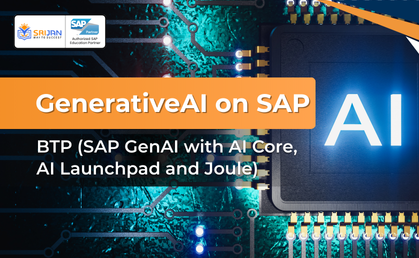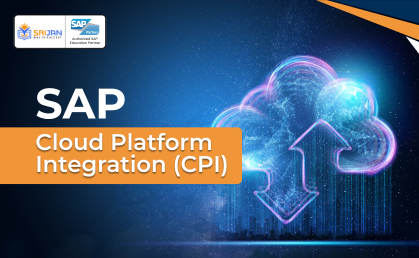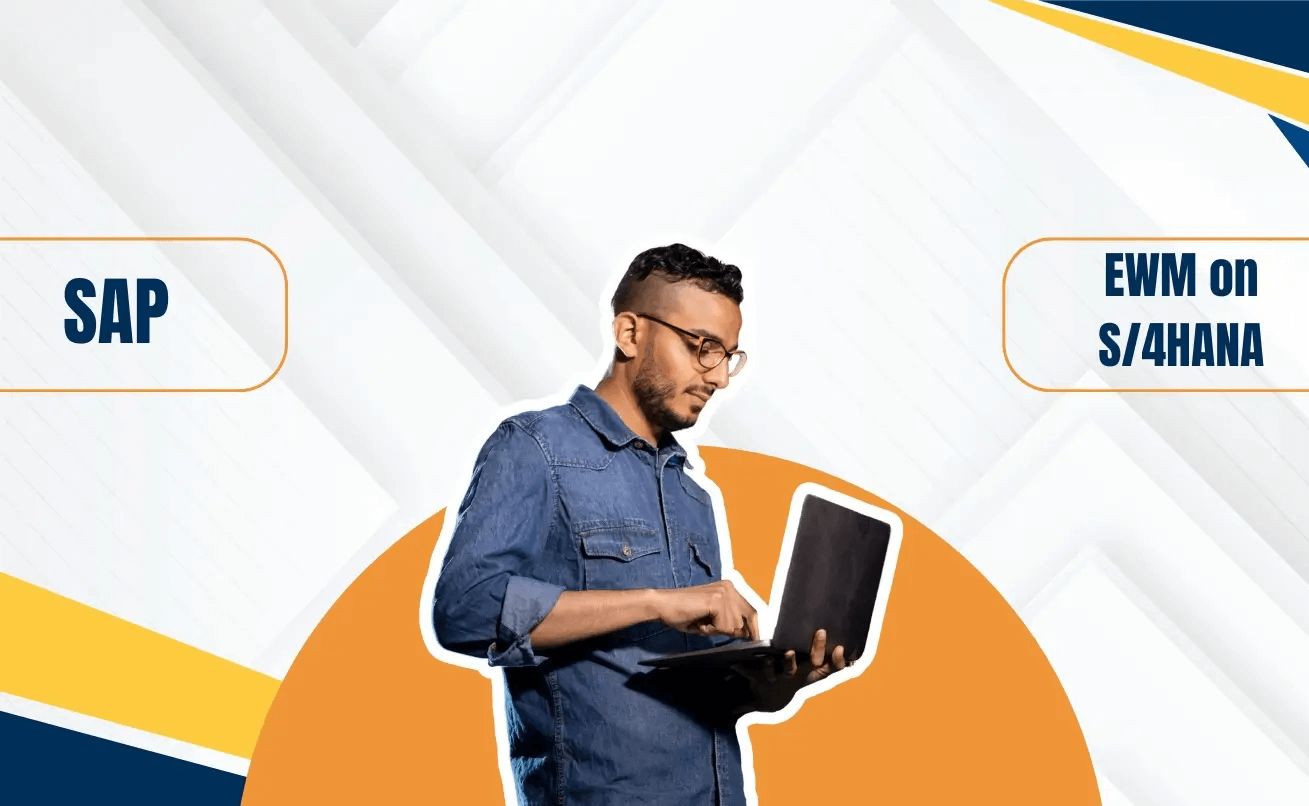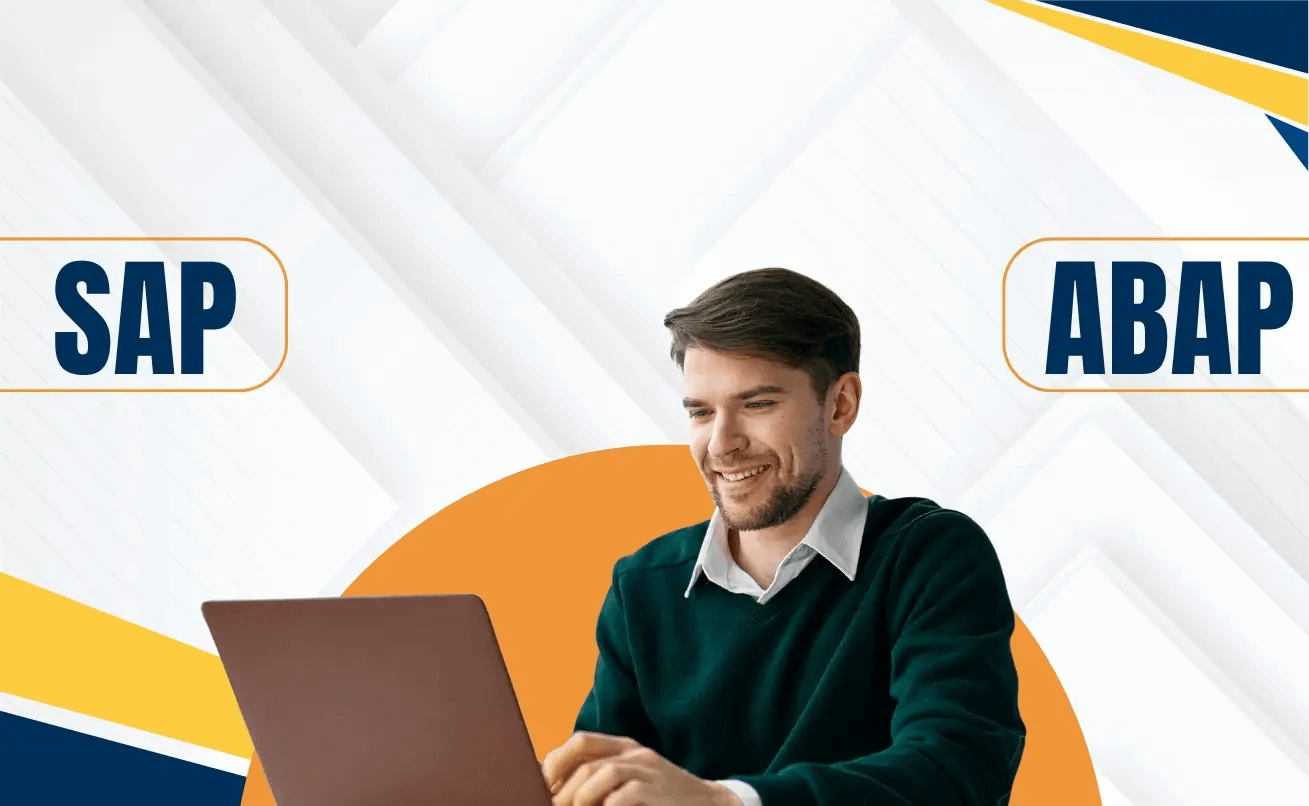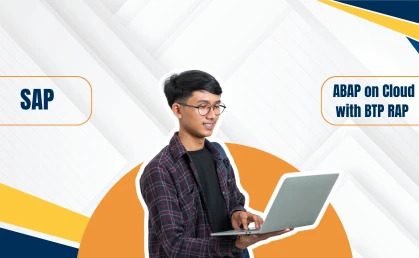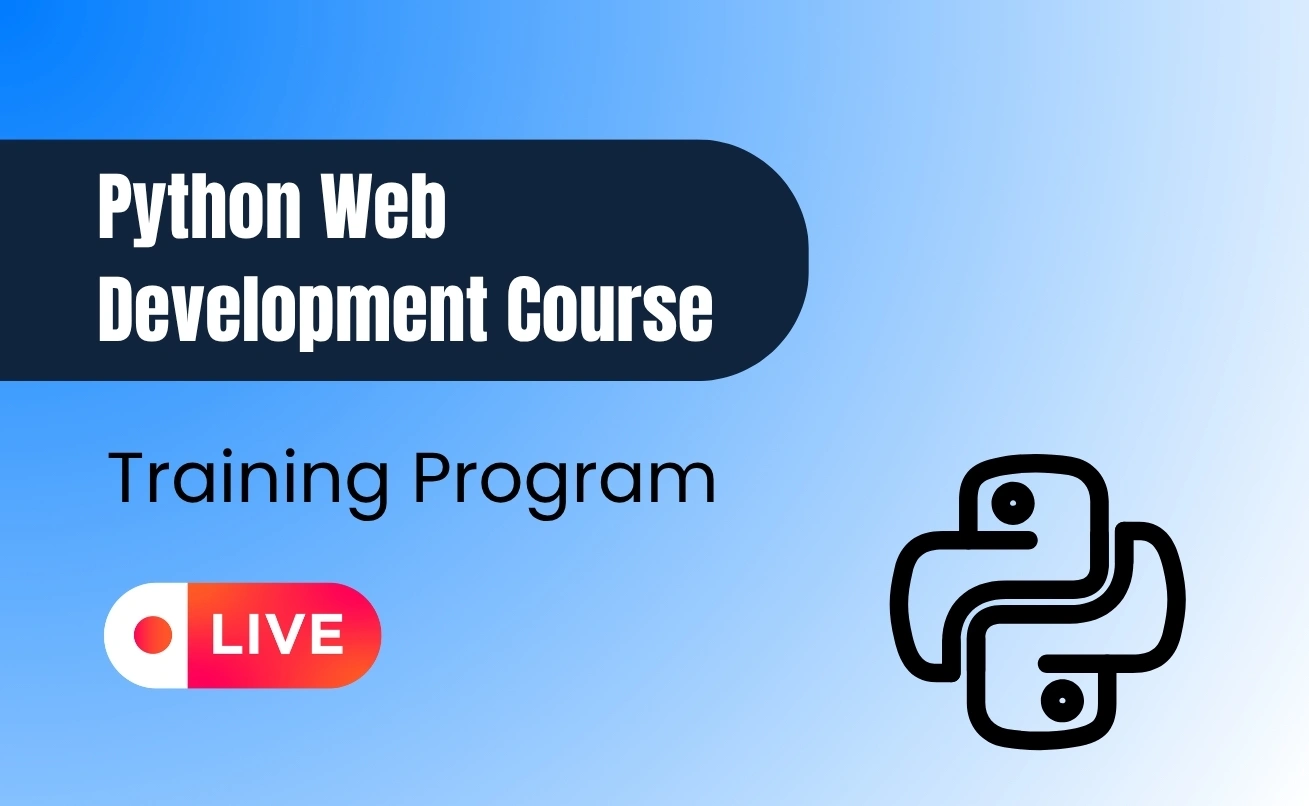What is a Python Web Development Course?
Web development means making websites and apps that people use online. For example, Facebook, Myntra, and Amazon are all products of web development.
When we say Python Web Development course online, it means using Python tools to make websites and apps. You can make the front part that people see called front-end and the back part that functions in the background called back-end. If you can do both, you become a full stack Python developer course.
Why Choose Python for a Web Development Course online?
Python web development course is used by almost all companies and is the most used tool in the industry. By enrolling in a python full stack course online, you prepare yourself for a future where your skills will always be in demand. Python is everywhere. It powers small apps and even huge systems. Some of the biggest companies in the world use Python because it is:
- Easy to learn: The code is simple and like English.
- Versatile: You can use it for web development, data collection, artificial intelligence, and even games.
- In demand: There are thousands of jobs for Python developers and always in demand.
- Strong community: So many learners and experts share free tips, tutorials, and tools.
By joining a Python developer course online at Srijan Institute, you prepare yourself for a future ready career
What Makes a Python Web Development Course Easy to Learn?
The reason many students and experts love the Python full stack course online is that it looks almost like simple English. You don’t need to learn complex commands. Like, if you want the computer to print Hello World, you just type print "Hello World".
This flexibility makes Python course online is the best option for freshers. Our python programming course at Srijan Institute uses simple examples and real projects so that learning never feels boring or difficult.
What You Will Learn in the Python Full Stack Course?
When you join our python development course online, you don’t just learn theory. You actually build things step by step. You start with the basics of Python, then making websites with HTML and JavaScript. Then you add Python parts like Django and Flask to create better background systems.
At Srijan Institute, we start from the basics and slowly move to advanced topics. Here’s a detailed look at the syllabus of python development course:
1. Python Basics
- Introduction to Python language
- Writing your first Python program
- Variables, data types, and operators
- Loops and conditions
- Functions and error handling
2. Front-end Development
- HTML – the structure of a web page
- CSS – adding design, colors, and layouts
- JavaScript – making pages interactive
3. Back-end Development with Python
- Introduction to web parts (Django / Flask)
- Building web apps using Python
- Managing forms, logins, and user accounts
- Working with sessions and cookies
4. Databases
- Introduction to SQL and NoSQL
- Connecting Python apps with databases
- Storing and managing user data
5. APIs and Integration
- What are APIs and why they are used
- Connecting your app with payment systems, maps, or social media
6. Projects and Practice
- Creating a blog application
- Building an online store
- Making a simple chat app
Who Can Take This Python Full Stack Developer Course?
The python full stack developer course online at Srijan Institute is made for everyone who wants to learn coding and build websites or apps. You don’t need to be a computer expert to join. If you are curious, love technology, or simply want a good career, this course is perfect for you.
The best part about our Python developer course online is that anyone can join.
- Students who want to start a career in coding
- College graduates looking for jobs in IT
- Working professionals who want to upgrade their skills
- Business owners who want to create their own apps
- Even school kids who are curious about coding
If you can use a computer, you can start a python development course online.
Join Python Development Course Online for Flexible Learning
One of the best things about Srijan Institute’s python course online is that you can learn from anywhere. You don’t need to travel to a classroom. All topics, practice classes, and assignments can be done from your home easily.
- More comfort: you can study when you want in the morning, evening, and weekends. If you miss one class, sometimes there is a recording.
- Usually the cost is lower because there’s no classroom rent, no travel cost.
- There are many online resources—videos, quizzes, forums, code examples. You can also repeat lessons as many times as you want.
Why Learn Python Development Course with Srijan Institute?
Whether you join our python full stack course, python programming course, or even try our python full stack developer course free trial, you always get the same high-quality guidance.
When you choose Srijan Institute for your Python full stack development course, you get:
- Simple learning style – We explain everything in very easy language.
- Hands-on projects – You build real apps, not just theory.
- Expert teachers – Our trainers have years of industry experience.
- Online learning option – You can join the Python course online from anywhere.
- Certificates – Get a Python course with a certificate that proves your skills.
- Career support – We guide you in job interviews and portfolio building
Why Choose Python Full Stack Development as a Career?
A full stack Python developer can work on both the front-end and back-end of a website. Companies want full stack developers because they can do more than others and in less time. Choosing the career of a Python full stack developer is like choosing a ticket to the future.
With the right python full stack course and a recognized python course with a certificate, you can enter one of the best jobs in today’s world. It gives you demand, respect, money, and the power to create something valuable.
This means:
- More job opportunities
- Higher salary
- Freedom to build your own projects
Career Options After Python Web development Course:
Completing a Python full stack developer course is like opening the door to many career paths. Python is one of the most popular programming languages in the world, and web development skills are in huge demand.
Python Full Stack Developer
The most common role after a python full stack development course is becoming a Full Stack Developer. In this job, you handle both the front end (design, user interface) and the back end (server, database, logic) of websites and apps. Companies love hiring full stack developers because they can do everything in one project.
Python Developer
Another great career path is to become a Python Developer. Here, you focus mainly on using Python for building applications, data processing, or automation. Python developers are needed in IT companies, startups, and even research organizations.
Web Developer
With your knowledge from the python programming course, you can also work as a Web Developer. In this job, you make and create websites for businesses, schools, or online stores.
Software Engineer
Many students use their python certification course as a stepping stone to becoming Software Engineers. In this role, you develop software solutions, test apps, and ensure everything works properly.
Freelance Developer
If you don’t want a 9-to-5 job, you can become a freelance developer. After finishing your python full stack developer course, you can build websites and apps for clients all over the world. Freelancing gives you the allowance to choose your assignments, set your own price, and work from anywhere.
Start Your Own Projects
Some learners use the skills from the python web development course with certificates to build their own startups or side projects. For example, you can create your own online store, mobile app, or learning platform. With Python, the possibilities are endless.
Python Development Course with Certificate
After completing the course, you will get a Python certification course certificate from Srijan Institute. This certificate will help you show your skills to companies.
Many of our students already work as Python developers, web developers, and software engineers in top companies. You could be the next one!
The demand for python full stack developers is growing every year. Companies need people who can work on both front and back. After completing this course, you can get jobs like Python Developer, Web Developer, Software Engineer, or Full Stack Developer.
Career Growth After Python Web development Course
Do you want to know how famous platforms like Instagram, YouTube, or others are made? Do you want to make your own unique website or app? The Python Web development Course Online is the perfect way to start your journey. Python is one of the easiest programming languages to learn, and with it, you can become a skilled Python full stack developer course who can build complete websites and applications.
In this python full stack development course, you will learn everything from the basics of Python programming to making high level web apps. The course is made for beginners, so even if you have never written a line of code before, you can understand it.
Python is one of the most useful programming tools in the field. It is easy, useful, and used by top companies like Google, Instagram, and Netflix. With Python, you can make good sites, apps, and even games. At Srijan Institute Institute, we teach you step by step, so even if you are a complete beginner, you can become a skilled Python full stack developer.
Why is Srijan Institute the best option for your Python Development Course?
We keep our teaching style easy, so you never feel alone. Even if you get confused, our teachers are there to help you. By the time you complete the python full stack development course, you will not only know how to code but also you will be a developer.
- We focus on practical learning, not boring theory.
- Our classes are interactive and friendly.
- We give personal attention to each student.
- You don’t need any background in coding. We start from zero.
- Lifetime access to course material and recorded videos.
Start Your Journey with Python Development course
The field of technology is full of options. With Python, you can create apps, websites, games, and even artificial intelligence. The first step is joining a good course.
The fee for Python Web Development training can vary depending on several factors, such as location, duration of the course, training format, and level of expertise. Various training options for Django are available, including instructor-led courses, e-learning courses, and virtual live classrooms.
For more details, you can Register/Sign Up.
Python Web Development certification is a professional credential that validates an individual’s knowledge and skills in using the frameworks for building robust web applications with Python. The certification assesses a candidate's ability to develop web applications, implement best practices, and leverage the features to create efficient and scalable solutions.
The certification program is offered at various levels, such as Beginner and Advanced. The Beginner level certification tests foundational knowledge of web development concepts, HTML, CSS, and JavaScript. The Advanced level certification is aimed at professionals with experience in applying complex features, developing REST APIs, and working with databases to create full-fledged web applications.
To prepare for the Python Web Development certification, candidates are advised to participate in official training programs, study for at least six weeks, and gain hands-on experience through real-world projects. Practical exposure along with proficiency in Python programming and frontend technologies, is key to success in the certification exam.
1. Introduction to Web Development
- Understanding web technologies and the web ecosystem
- Overview of client-side vs. server-side development
- Structure of HTML documents
- HTML tags, attributes, and elements
- Creating forms, tables, and lists
- Semantic HTML and accessibility best practices
CSS Basics
- Introduction to CSS and its role in web design
- CSS selectors, properties, and values
- Box model, layout techniques (flexbox, grid)
- Responsive design and media queries
- Styling forms and navigation menus
2: Introduction to Python
- Python syntax and data types
- Control structures (loops, conditionals)
- Functions and modules
- Working with libraries and packages
3: Introduction to SQL
- What is SQL?
- Purpose of SQL
- Who should learn SQL?
- What are the subsets of SQL?
- Data Definition Language
- Data Manipulation Language
- Data Control Language
4.Introduction to Databases and RDBMS
- Overview of databases
- Understanding RDBMS concepts
5.Install a Database Engine
- Download MS SQL Server, Oracle, or MySQL Database Engine
- Installation steps
- Launch SQL Server Management Studio
- Select New Query and launch SQL Query
- Type SQL Commands and Execute
6. SQL Syntax?
- Focus on SQL Syntax
- SQL keywords
- SQL is not case sensitive
- SQL Comments
- SQL Commands
- Writing SQL Statements
7.SQL Data Types?
- SQL Numeric data types
- Date and Time data types
- Character and String data types
- Unicode character string data types
- Binary data types
- Miscellaneous data types
8.SQL Operators?
- SQL Arithmetic Operators
- Comparison Operators
- Logical Operators
- Bitwise Operators
9. SQL Expressions?
- SQL Boolean Expression
- SQL Numeric Expression
- SQL Date Expression
10. SQL Comments?
- SQL Comments
- Purpose of comments
- Single-Line Comments
- Multi-line Comments
11.. SQL – Data Definition Language Commands and Operations?
- SQL Data Definition Language Commands
- Create, Alter, Drop, Truncate, Rename
- Data Definition Language Operations
- Create a Database
- Use Database
- Rename a Database
- Drop Database
- Create a Table
- Rename Table
- Add a Column to Existing Table
- Add Multiple Columns to Existing Table
- Modify an Existing Column
- Rename a Column
- Drop a Column
- Truncate a Table
- Drop a Table
12. . SQL – Data Manipulation Language Commands and Operations?
- Data Manipulation Language Commands
- SELECT, INSERT, UPDATE, DELETE
- Data Manipulation Language Operations
- Retrieving data from a table
- Inserting data into a table
- Updating existing data in a table
- Deleting all records from a table
13.SQL – Data Control Language Commands?
- Overview of DCL commands
- GRANT and REVOKE
- Managing rights, permissions, and controls in the database system
14.. JavaScript in Web Browser
- Embedding JavaScript in HTML
- Execution of JavaScript code
15.Browser Object Model
- The window object
- Dialog boxes
- Timers
- The location object
- The navigator object
- Browsing history
16.Handling Events
- Document structure
- Selecting document elements and query selectors
- Moving through DOM tree
- HTML elements and attributes
- Creating, changing, and deleting nodes
17.AJAX
- Event propagation
- Event handlers registering and invocation
- Event object
- Types of events
18.Graphics
- JavaScript and HTTP communication
- Synchronous and asynchronous requests
19.Data Storage?
- Multimedia basics
- Canvas API basics
20.Security
- Cookies
- Web Storage
- IndexedDB
21.SQL – Data Control Language Commands?
- Filesystem security
- The Same Origin Policy
- Plugins
- Cross-Site Scripting
22.Python for Beginners
- Python IDE/Editor Installation
- Python Variables
- Arithmetic Operators
- Comparison Operator
- Assignment Operator
- Membership Operator
- If Statement
- If Else Statement
- Break & Continue Statement
- Exception Handling
- File Operation
- Python Built-in Modules
- Packages in Python
- Python Date and Time
- Python Regular Expressions (RegEx)
- Python XML Parser
- Python Database Communication
- Web Scraping
- GUI Programming (Tkinter)
23.Core Python Syllabus
- Introduction to Python
- Installing Python IDES (Python IDLE and Anaconda)
- Data-types in Python
- Variables in Python: Declaration and Use
- Typecasting in Python
- Operators in Python: Assignment, Logical, Arithmetic
- Taking User Input
- Conditional Statements: If, else, Nested, If, else, and elif
- Python Collections: List, Tuple, Sets, and Dictionary
- Loops in Python: For Loop, While Loop, Nested Loops
- String Manipulation: Basic Operations, Slicing, Functions, and Methods
- User Defined Functions, Types of Functions
- Lambda Function
- Importing Modules: Maths Module
- Object-Oriented Programming in Python
25.Advanced Python Syllabus
- Iterators for Dictionaries
- keys() and values()
- The 'in' Operator
- Building Lists
- List Comprehension Syntax
- List Slicing Syntax
- Omitting Indices
- Reversing a List
- Stride Length
- Anonymous Functions
- Lambda Syntax
- Iterating Over Dictionaries
- Comprehending Comprehensions
- List Slicing
26.Models and Databases
- Django Models: Creating data models and defining relationships.
Q1. What is Django, and what are its main features?
A1: Django is a high-level Python web framework that encourages rapid development and clean, pragmatic design. Its main features include an ORM (Object-Relational Mapping), automatic admin interface, built-in authentication, robust security features, and a modular architecture.
Q2. What is a Django model, and why is it important?
A2: A Django model is a Python class that defines the structure of your database table, including fields and their types. It is important because it provides a clear representation of the data in your application and allows you to interact with the database using Python code rather than SQL.
Q3. What is the Django ORM, and how does it help in database management?
A3: The Django ORM (Object-Relational Mapping) is a powerful database abstraction layer that allows developers to interact with databases using Python objects instead of SQL queries. It simplifies database management by providing an easy-to-use interface for creating, retrieving, updating, and deleting records.
Q4. What is the difference between a Django view and a template?
A4: A Django view is a Python function or class that receives a web request and returns a web response. A template, on the other hand, is an HTML file that defines the structure and layout of a webpage. The view handles the logic, while the template handles the presentation.
Q5. What is a Django URLconf, and how does it work?
A5: A URLconf (URL configuration) in Django is a mapping between URL patterns and views. It allows you to define how URLs are processed in your application by associating specific URL patterns with corresponding view functions or classes.
Q6. How do you create a simple Django project?
A6: To create a simple Django project, you can follow these steps:
- Install Django using pip.
- Run the command
django-admin startproject projectnameto create a new project. - Navigate to the project directory and run
python manage.py runserverto start the development server. - Access the project in your web browser at
http://127.0.0.1:8000/.
Q7. What is data migration in Django, and why is it important?
A7: Data migration in Django is the process of applying changes made to the models to the database schema. It is important because it ensures that the database structure is in sync with the application’s data models, enabling smooth updates and version control of the database.
Q8. What is a Django form, and how is it used?
A8: A Django form is a Python class that represents an HTML form and handles user input. It is used to validate and process data from users, generate HTML form elements, and manage form submission.
Q9. What is the purpose of Django middleware?
A9: Django middleware is a framework of hooks into Django's request/response processing. It is used to process requests globally, perform tasks such as authentication, logging, and session management, and manipulate the request and response objects before they reach the view or after they leave the view.
Q10. What is the Django admin interface, and how does it help developers?
A10: The Django admin interface is an automatically generated web interface for managing application data. It helps developers by providing a user-friendly way to create, read, update, and delete records without having to write custom views or forms.
Q11. What is a Django template, and how does it facilitate dynamic web pages?
A11: A Django template is a text file that defines the layout of a web page, containing HTML mixed with Django Template Language (DTL). It facilitates dynamic web pages by allowing developers to insert dynamic data into the HTML using template tags and filters.
Q12. What is a Django signal, and how is it used?
A12: A Django signal is a mechanism that allows different parts of an application to communicate with each other. Signals are used to allow decoupled applications to get notified when certain actions occur elsewhere in the application, such as when a model is saved or deleted.
Q13. What is Django REST framework, and why is it used?
A13: Django REST framework is a powerful toolkit for building Web APIs in Django. It is used to create RESTful APIs that enable communication between a client (like a web or mobile app) and a server, allowing for the exchange of data in a structured format like JSON.
Q14. What is the purpose of unit tests in Django?
A14: The purpose of unit tests in Django is to verify that individual components of the application work as intended. By writing tests for models, views, and forms, developers can ensure that changes do not break existing functionality and maintain code quality.
Q15. What are static files in Django, and how are they managed?
A15: Static files in Django are files such as CSS, JavaScript, and images that do not change dynamically. They are managed using the static app and can be collected and served during development and in production using the collectstatic command.
Q16. What is a context processor in Django, and how does it work?
A16: A context processor in Django is a Python function that takes a request object as input and returns a dictionary of data that is added to the context of all templates. It allows developers to make common data available to templates without having to include it explicitly in every view.
Q17. What is a Django query set, and how is it useful?
A17: A Django query set is a collection of database queries that can be executed to retrieve records from the database. It is useful because it allows developers to filter, order, and manipulate data in a Pythonic way, leveraging the power of Django's ORM.
Q18. What is the difference between a one-to-one and a foreign key relationship in Django?
A18: A one-to-one relationship in Django means that each record in one model is related to one and only one record in another model, whereas a foreign key relationship means that one record in a model can be related to multiple records in another model. This is implemented using OneToOneField and ForeignKey, respectively.
Q19. What is CSRF protection in Django, and why is it important?
A19: CSRF (Cross-Site Request Forgery) protection in Django is a security measure that helps prevent malicious attacks by ensuring that requests made to the server are coming from trusted sources. It is important because it protects sensitive user actions, such as form submissions, from being executed without the user’s consent.
Q20. What is Django's architecture pattern, and what are its components?
A20: Django follows the MVT (Model-View-Template) architecture pattern. Its components include:
- Model: Defines the data structure and business logic.
- View: Processes user requests and returns responses.
- Template: Manages the presentation layer and displays data to the user.
Participants will have 24/7 access to our online lab, providing hands-on experience with Django and Python web development tools and scenarios.
This includes server access to Python, Django, and Jupyter Notebooks for 1 year, ensuring ample time to practice and apply your skills in a real-world environment.
With this extended access, you can work on projects, explore advanced Django features, and solidify your understanding of web development using the latest technologies.
0
Satisfied Students0
Years of Excellence0
Practical TrainingCourse Certification
Python Web Development certification is a professional credential that validates an individual’s knowledge and skills in using the frameworks for building robust web applications with Python. The certification assesses a candidate's ability to develop web applications, implement best practices, and leverage the features to create efficient and scalable solutions.
The certification program is offered at various levels, such as Beginner and Advanced. The Beginner level certification tests foundational knowledge of web development concepts, HTML, CSS, and JavaScript. The Advanced level certification is aimed at professionals with experience in applying complex features, developing REST APIs, and working with databases to create full-fledged web applications.
To prepare for the Python Web Development certification, candidates are advised to participate in official training programs, study for at least six weeks, and gain hands-on experience through real-world projects. Practical exposure along with proficiency in Python programming and frontend technologies, is key to success in the certification exam.
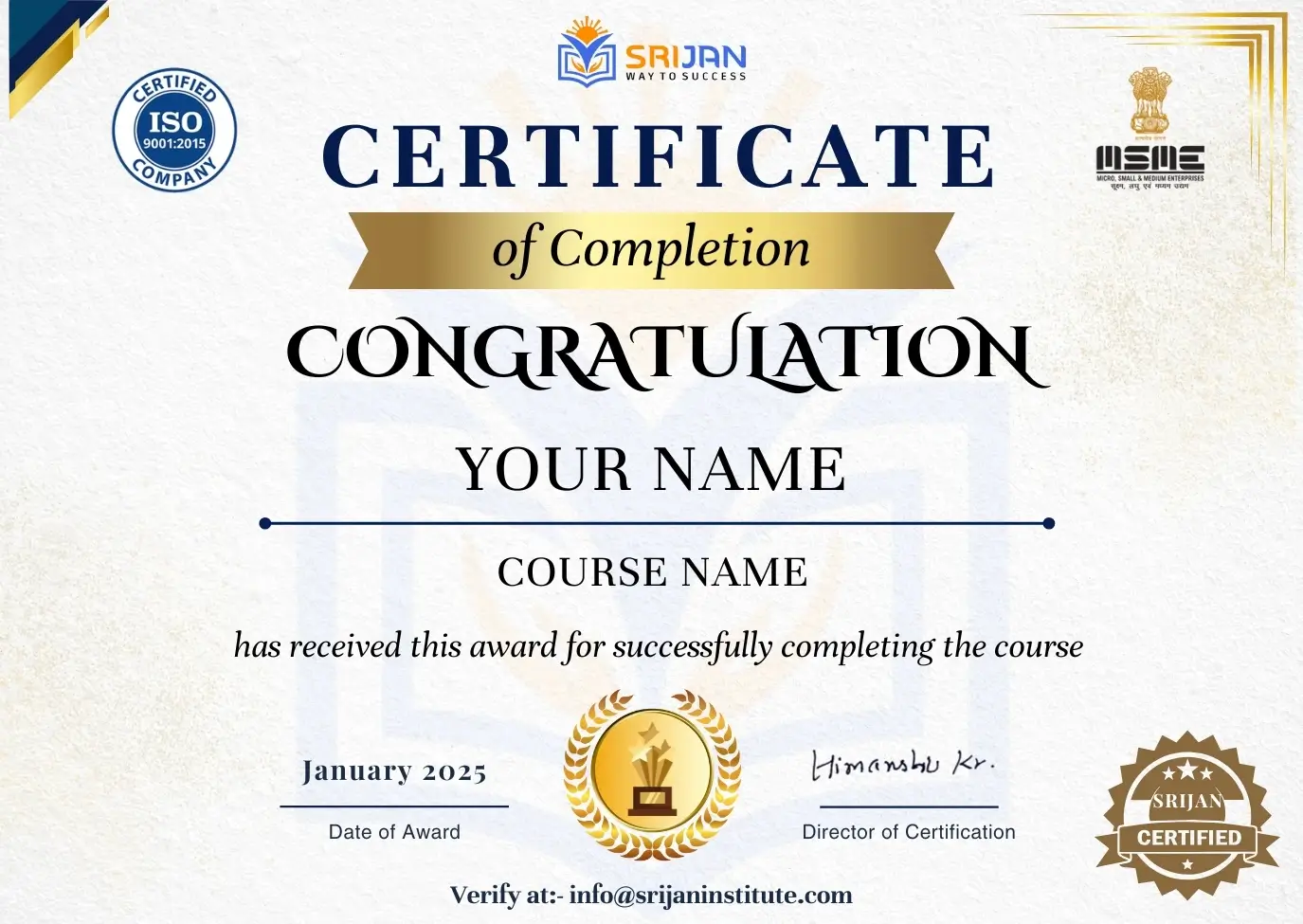
Our Hiring Partners
Our Popular Instructors
Meet our most talented and popular instructors

Mr. Manoj Pandey
SAP| MM| EWM|Ariba|erSAP Global Certified|SAP Consultant

Mr. Amrit Raj
Full Stack SAP Developer CUM ABAP On HANA Trainer | SAP BTP Developer | Full Stack Developer | ERP & Data Science| SAP Global Certified

Mr. Sudheer Sharma
SAP| FICO|Trainer|SAP Consultant

Priyanshu Panday
SAP Basis and Security Consultant

Buddhi Vishwas
SAP HCM and SAP Successfactor Consultant | Payroll | RCM | Employee Central
Choose Your Python Web development Course Learning Plan
Pick the Python Web development Course batch that best fits your schedule—ongoing, upcoming, and recorded options.
- First Batch Start Date: 11th November 2025
- Second Batch Start Date: 25th November 2025
($270)
- First Batch Start Date: 9th December 2025
- Second Batch Start Date: 23rd December 2025
($270)
Learn at Your Own Pace
Self Paced Videos
Learn anytime, anywhere with our curated recorded courses
Python Web development Course FAQs
Yes! Our Python Web Development Course Online is designed for beginners, so there is no need to have any prior coding experience.
Absolutely. Our Python Web Development Course Online consists of real-world projects which are mentor-guided, so you know exactly how to apply what you learn.
Yes, we offer flexible classes for our Python Web Development Course online at your convenience and pace of learning.
Level Up Your Skills with Our Python Web development Course Today!
Unlock Your Career Potential with Our Python Web development Course and Start Learning Today and Gain the Skills Employers Demand!


